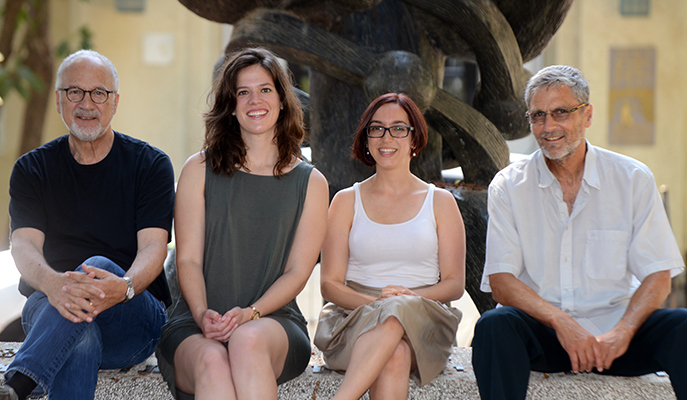
July 15, 2017
How does attention direct the subconscious actions of our sensory organs? Many of us have had the experience of sitting on the sofa at the end of a long day with the TV on, all the while letting thoughts run through our heads. When we finally actually look at the screen, we notice that for the last hour we have been watching the same movie or episode we saw just last week. Intuitively we know that when we are paying attention our senses take in a lot more detail.
But what is the connection between the act of paying attention and reflexive sensory perception?
Behavioural studies support our intuition – there is indeed an important connection — but little research has investigated the physical basis of this connection. Research at the Weizmann Institute of Science that recently appeared in Current Biology has revealed a physiological mechanism that is controlled by attention. The findings, undertaken in rat whiskers, add a new twist to our understanding of sensory perception.
Reflex actions are automatic, subconscious and responsive. Paying attention, on the other hand, is a more conscious “higher-brain” act. How does the active state of attentiveness in our brain affect the responsive reflexes of our sensory organs?
Professor Ehud Ahissar of the Neurobiology Department investigated such questions in the highly sensitive sensory organs of rats – their whiskers.
Five years ago he and his group had identified a reflexive reaction in the whiskers when they came into contact with an object, which they named the “touch induced pump” or TIP. This is an in-out vibration – an action that multiplies the number of individual contacts and may facilitate sensing the properties of the object. The researchers noticed that the TIP sped up after the object was touched. This high-speed response is understood to be reflexive; but, surprisingly, the researchers found that it is initiated only in some of the instances of touch.
Dr Dana Sherman, then a joint research student in Ahissar’s group and in the group of Professor David Harel of the Computer Science and Applied Mathematics Department, first developed a mathematical model that demonstrated a mechanism in which reflex activation arises within nerve circuitry in the brain stem.
To understand what controls this mechanism, Sherman carefully examined the behaviour of rats that were exploring both novel and familiar objects. She and research student Tess Oram measured these reactions in rats, which were allowed to explore varied surroundings in different situations. They found that when a rat indicated its interest in an object – by turning its head – the chances of a reflex reaction occurring were much greater.
The findings were quite conclusive: Reflex responses were observed less than 30% of the time when the touch was random, while the chance of such a response when the rat explored an object with intent was above 65%.
Ahissar explained that perception likely occurs in “closed loops” in which sensory signals originate in the sensory organ (say, a whisker), pass up to the brain and then return to the sensory organ to retune the sensor’s motion.
“We hypothesize that such loops are the basic units of perception. In order to understand perception, we need to understand the operation of individual loops and the interactions between them,” he said.
“In this study, we add a new angle that has not been investigated: a perceptual process that includes the effect of higher mental processes on the most basic, reflexive loops.”
For Ahissar, these findings close a sort of research circle as well: “In my lab, we began ‘high up’ in the cortex of the brain, moved down to researching the brain stem, and eventually from there to the whiskers themselves. Now we have climbed back up from the tips of the whiskers into the circuitry of the higher brain. In some ways, this climbing up reflects the evolution of sensory perception itself, as it grew from basic reflex into something much more complex.” That is, something requiring a bit of attention.

(l-r) Professor David Harel, Tess Oram, Dr.Dana Sherman and Professor Ehud Ahissar are paying attention to the ways our conscious and subconscious brain regions interact






